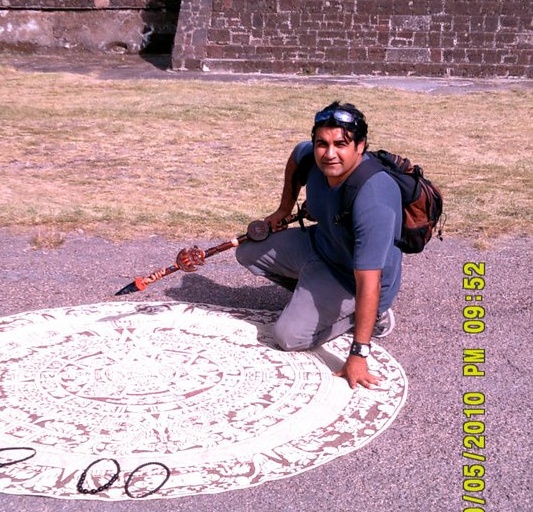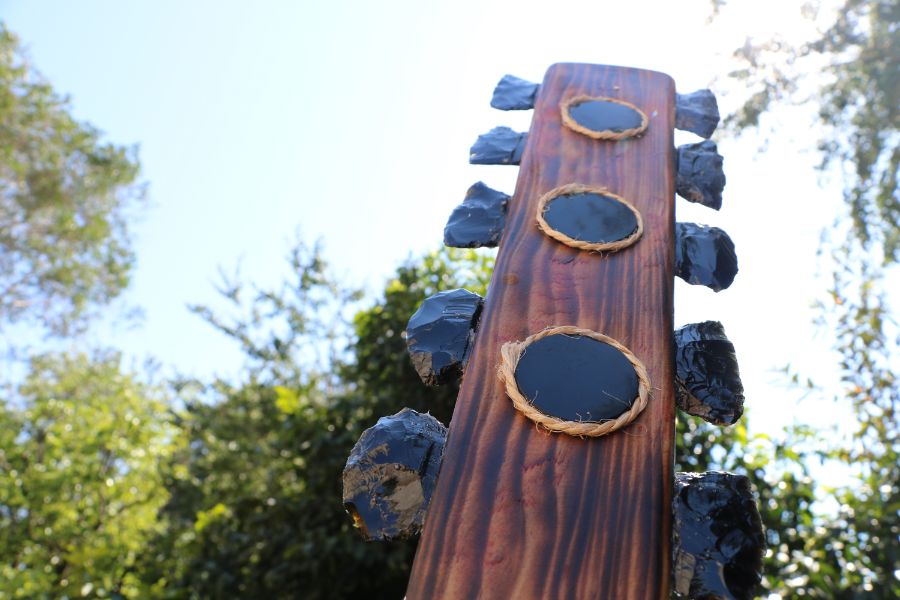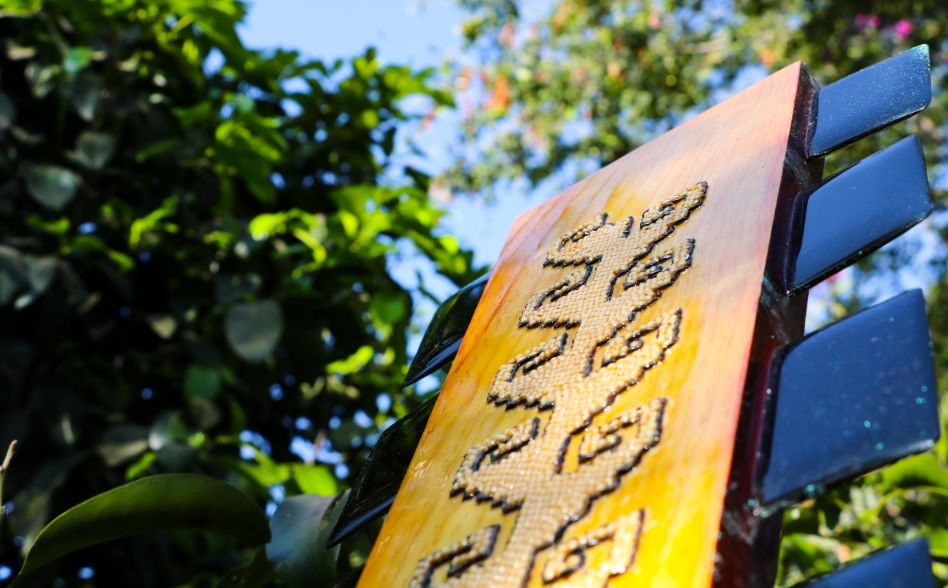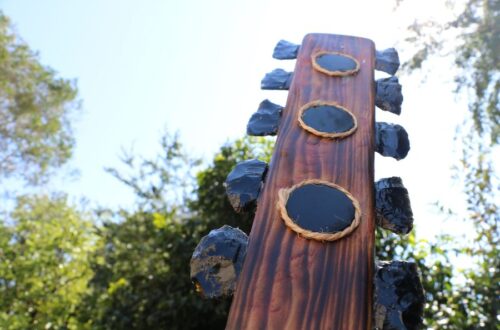The obsidian blade catches the morning light like volcanic glass frozen in time. This is no ordinary weapon. This is the macuahuitl—a tool that shaped empires, defined warrior societies, and continues to capture our imagination centuries after the fall of Tenochtitlan.
As someone who has spent years studying Mesoamerican cultures and their deep connection to the natural world, I find myself constantly amazed by the ingenuity behind ancient aztec weapons. These weren’t just tools of war. They were sacred instruments that reflected a sophisticated understanding of materials, warfare tactics, and spiritual beliefs.

The Foundation of Aztec Military Power
The Aztec empire weapons system developed over centuries, drawing from earlier Mesoamerican traditions that date back to the first millennium CE. Unlike European metallurgy, Aztec weapon-making relied on the abundant natural resources of central Mexico: hardwood, obsidian, and human creativity.
Obsidian mines were located close to Aztec settlements, particularly in the Sierra de las Navajas (Razor Mountains), named specifically for their obsidian deposits. This volcanic glass became the foundation of their weapons technology. When properly knapped, obsidian creates edges sharper than modern surgical steel—a fact that continues to amaze researchers studying pre-columbian Mesoamerica.
The strategic importance of obsidian cannot be overstated. It was abundant, workable, and deadly effective. More importantly, it aligned with Aztec spiritual beliefs about the sacred nature of volcanic materials.
Macuahuitl: The Obsidian Chainsaw
The macuahuitl stands as perhaps the most iconic of all mesoamerican weapons. The name translates as “Hand-wood” and derives from the Nahuatl language. Spanish conquistadors quickly learned to fear this weapon, and for good reason.
Shaped like a cricket bat, its edges were lined with razor-sharp obsidian blades capable of severing limbs and inflicting devastating harm. The construction required masterful craftsmanship. Artisans carved grooves along the weapon’s edges, then secured obsidian blades using bitumen or plant-based adhesives.
According to accounts, one Indian warrior cut open the whole neck of Cristóbal de Olid’s horse with a single stroke, killing the horse instantly. Such accounts weren’t exaggerated Spanish propaganda—they reflected the terrible efficiency of these weapons.
The macuahuitl served multiple purposes beyond simple killing. Given the importance of human sacrifice in Nahua cultures, their warfare styles placed a premium on capturing enemy warriors for live sacrifice. The weapon’s design reflected this cultural priority.
Huitzauhqui: The Warrior’s Club
The huitzauhqui was a club shaped like a baseball bat, sometimes lined with small blades or protrusions. While less famous than the macuahuitl, this weapon played a crucial role in Aztec warfare tactics.
These clubs excelled at non-lethal incapacitation. Warriors could strike opponents unconscious without causing fatal wounds, facilitating the capture of prisoners for ritual sacrifice. The huitzauhqui represented the sophisticated balance between practical warfare and religious requirements that characterized Aztec military culture.
Different variations existed for different combat roles. Some featured smooth surfaces for blunt trauma, while others incorporated small obsidian teeth for enhanced damage. The versatility of design shows the adaptive thinking of Aztec weapon smiths.
Tepoztopilli: The Obsidian-Edged Spear
The tepoztopilli was a common front-line weapon of the Aztec military, roughly the height of a man, although sizes ranged from 3 to 7 feet in length. This polearm combined the reach advantage of European spears with the cutting power of obsidian technology.
The wedge-shaped wooden head was edged with razor-sharp obsidian blades set in grooves and cemented with bitumen or plant resin. The result was a weapon equally effective for thrusting and slashing motions.
Spanish conquistador accounts provide sobering testimony to the tepoztopilli’s effectiveness. Bernal Díaz del Castillo mentions that on one occasion his armor was pierced by an Aztec lance and only his thick cotton underpadding saved his life. These weapons could penetrate European steel armor—a fact that challenged assumptions about technological superiority.
The tepoztopilli’s length gave inexperienced warriors the ability to contribute meaningfully to battle. The greater length allowed users to stand behind experienced warriors and “shove or jab the weapon” into adversaries. This tactical flexibility made the tepoztopilli essential to Aztec military formations.
IItztopilli: The Sacred Axe
The Aztecs used axe-like weapons named itztopilli during battle, largely similar to tomahawks or modern hatchets, with wooden handles and sharpened metal or stone heads. These weapons represented a later development in Aztec warfare technology.
The sharp side was made of copper and stone, balanced with a blunt side, giving the weapon dual purpose in close quarters. This design philosophy—combining cutting and bludgeoning capabilities—appears throughout the Aztec weapons system.
Itztopilli required significant skill to wield effectively. While harder to control than other weapons, they were also more powerful and effective at penetrating armor. Elite warriors often favored these weapons for their superior armor-piercing capabilities.
The relative rarity of itztopilli made them highly prized. They were newer inventions for the Aztecs and not as widely used as other weapons, making them relatively rare and incredibly desirable. Possessing an itztopilli marked a warrior’s elevated status within the military hierarchy.
Tecpatl: The Ritual Blade
The tecpatl was a knife often carried as a side arm in daily life, best known for its use in human sacrifices, though select warrior groups carried these knives onto the battlefield. This dual-purpose tool embodied the intersection of sacred and martial life in Aztec culture.
Tecpatl had handles seven to nine inches long with double-sided blades made of flint. The construction prioritized sharpness and ritual significance over battlefield durability.
The knife was often adorned half in red to signify the color of blood, tying the blade to its ceremonial uses in sacrifice. This symbolic coloring reminds us that aztec warrior weapons served spiritual purposes alongside military ones.
The tecpatl’s battlefield role focused on close-quarters finishing moves and ritual elements of combat. Warriors carried them as backup weapons and tools for post-battle ceremonies involving captured enemies.
Atlatl: The Spear Thrower
Aztec warriors used tools known as atlatl to launch spears, darts and arrows—essentially sticks that acted like levers to extend a person’s throwing arm. This ingenious device dramatically increased the range and power of projectile weapons.
An atlatl is essentially a stick with a handle on one end and a hook or socket that engages a light spear or “dart” on the other. The mechanical advantage provided by this simple tool transformed javelin throwing from short-range harassment to long-range devastation.
Only the highest ranks were allowed these weapons as they fought in the front lines of battle. The atlatl’s restriction to elite warriors reflects both its effectiveness and the skill required for proper use.
Archaeological evidence suggests the atlatl predated the Aztec empire by thousands of years. Variations of the device were popular throughout pre-Columbian America and were also used by Maya civilization. The Aztecs perfected an ancient technology rather than inventing something entirely new.
Sacred Warriors and Museum Collections
Understanding aztec weapons requires appreciating their cultural context. These tools shaped the elite warrior societies that defined Aztec military culture. Advancement into the elite cuāuhocēlōtl warrior societies required taking 20 live captives from the battlefield. Weapon mastery directly correlated with social advancement.
Modern museums preserve examples of these remarkable weapons technologies. The Los Angeles County Museum of Art (LACMA) houses notable pre-Columbian galleries showcasing Mesoamerican military artifacts. Meanwhile, the Dumbarton Oaks Museum includes objects created during three thousand years of history in Mesoamerica, with holdings of over seven hundred objects including stone sculpture, ceramics, and metal objects.
Unfortunately, the last authentic macuahuitl was destroyed in 1884 in a fire in the Real Armería in Madrid. This loss represents more than the destruction of a single artifact—it eliminated our last direct connection to the craftsmanship that created these legendary weapons.
Legacy of Innovation
The weapons of the aztec empire demonstrate remarkable innovation within environmental constraints. Without access to iron or steel, Aztec craftsmen created tools that challenged the finest European weaponry of their era. Their success lay not in copying foreign designs, but in perfecting technologies suited to their materials and tactical requirements.
The spiritual dimension of these weapons reminds us that what type of weapons did the aztecs use cannot be understood through purely military analysis. Each tool carried sacred significance, connecting warriors to cosmic forces and divine purposes. The red pigment on tecpatl blades, the ceremonial functions of captured macuahuitl, and the ritual requirements surrounding weapon crafting all point to a holistic worldview where martial and spiritual life intertwined seamlessly.
Today, as we seek to understand indigenous technologies and sustainable resource use, Aztec weapons offer valuable insights. They achieved devastating effectiveness using renewable materials and time-tested techniques. Their legacy challenges us to reconsider our assumptions about technological progress and cultural sophistication.
Honoring Ancient Wisdom
The study of ancient aztec weapons connects us to a worldview that saw no separation between practical skill and spiritual practice. Every obsidian blade carried prayers. Every wooden shaft embodied sacred relationships with forest spirits. Every warrior who lifted these tools participated in cosmic drama larger than individual combat.
As someone who values both historical accuracy and indigenous wisdom traditions, I find profound meaning in these ancient technologies. They remind us that human ingenuity flourishes within any material constraints when guided by deep cultural knowledge and spiritual purpose.
The weapons of the aztecs continue teaching us today. They speak to the power of working with natural materials rather than against them. They demonstrate the importance of designing tools that serve multiple cultural functions. Most importantly, they honor the sophisticated technological achievements of pre-columbian Mesoamerican civilizations.
In our modern world of mass production and synthetic materials, perhaps we can learn something from craftsmen who carved each obsidian blade with sacred intention and shaped each wooden handle with generations of inherited knowledge. The weapons of the aztec empire offer more than historical curiosity—they provide a window into ways of being that prioritized harmony between human creativity and natural abundance.






